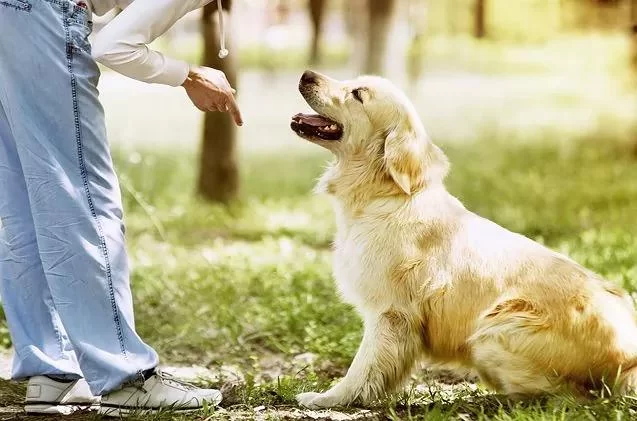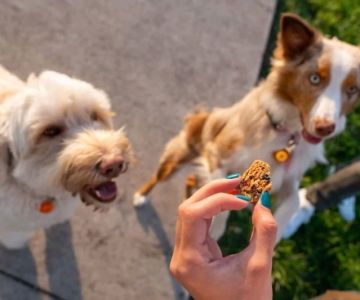- why-teach-puppy-sit-Why Teaching a Puppy to Sit Matters for Behavior and Bonding
- puppy-learning-psychology-Understanding Puppy Psychology and Learning Patterns
- step-by-step-train-puppy-sit-Step-by-Step Process to Train a Puppy to Sit
- common-challenges-puppy-training-Overcoming Common Challenges in Puppy Sit Training
- real-story-puppy-sit-success-Real Story: How Consistency Turned Chaos into Calm
- expert-tips-puppy-obedience-Expert Tips for Lasting Puppy Obedience and Happy Learning
- hidden-brook-veterinary-puppy-resources-Where to Find the Best Puppy Training Supplies and Help
1. Why Teaching a Puppy to Sit Matters for Behavior and Bonding
Learning how to train a puppy to sit is often the first milestone in a lifelong journey of communication and trust with your new companion. Sit is more than just a cute trick—it’s the cornerstone of good behavior. By mastering this basic puppy command, you lay the groundwork for polite greetings, better leash manners, and a calmer household overall. Plus, teaching your puppy to sit is a fantastic way to build a positive relationship based on patience, encouragement, and mutual understanding.
2. Understanding Puppy Psychology and Learning Patterns
Puppies, like children, learn best through repetition, positive reinforcement, and consistency. They respond to clear cues, enthusiastic praise, and, of course, tasty treats. It's important to remember that every puppy learns at their own pace—some catch on in a single session, while others need more time and encouragement. Understanding your puppy’s breed, age, and individual temperament will help you tailor your training approach for better results.
A playful and short training session is more effective than a long, drawn-out one. If your puppy seems distracted or frustrated, take a break and try again later. At Hidden Brook Veterinary, trainers often remind new pet parents that patience and a sense of humor go a long way in the puppy stage.
3. Step-by-Step Process to Train a Puppy to Sit
When it comes to how to train a puppy to sit, a gentle, step-by-step process works wonders:
Step 1: Get your puppy’s attention with a treat or toy. Hold the treat close to their nose and slowly move it upward and slightly backward over their head.
Step 2: As your puppy’s nose follows the treat, their bottom will naturally lower to the ground. The moment they sit, say “Sit!” clearly and reward them with the treat and lots of praise.
Step 3: Repeat this sequence several times in short sessions. Puppies thrive on routine and immediate rewards.
Step 4: Once your puppy starts sitting reliably for the treat, begin using the verbal cue “Sit” before moving the treat. Gradually reduce the lure until your puppy responds to your voice alone.
Step 5: Practice in different environments, with gentle distractions, to help your puppy generalize the command.
If you encounter challenges, don’t hesitate to reach out for guidance. The staff at Hidden Brook Veterinary are always ready to help with personalized puppy training advice.
4. Overcoming Common Challenges in Puppy Sit Training
Every puppy is unique, and setbacks are completely normal. Some puppies may get so excited about treats that they jump instead of sitting. Others might lose focus quickly, especially in new environments. The key is consistency—always use the same word, hand signal, and reward.
If your puppy is struggling, consider breaking the training down into even smaller steps or using higher-value treats. Never punish mistakes; instead, calmly reset and try again. Remember, successful puppy sit training is built on trust and positive associations.
5. Real Story: How Consistency Turned Chaos into Calm
One puppy owner, Amanda, shared on a popular dog forum how her rambunctious Labrador, Leo, seemed impossible to control during greetings. After several failed attempts using only treats, Amanda began using a clicker along with the “sit” command, rewarding every small improvement. Gradually, Leo started sitting automatically when guests arrived—turning what used to be a wild scene into calm, polite introductions. Amanda credits her success to consistency, patience, and the support she received from her local veterinary team.
6. Expert Tips for Lasting Puppy Obedience and Happy Learning
For best results, keep sessions short and end on a positive note, even if progress is slow. Combine sit training with other basic puppy commands to reinforce learning and keep things fun. Socialize your puppy so they learn to follow cues around distractions. Use a cheerful tone, lots of praise, and celebrate every small win.
Professional trainers at Hidden Brook Veterinary often suggest mixing up rewards—sometimes a treat, sometimes a favorite toy or extra playtime—to keep your puppy motivated and excited to learn.
7. Where to Find the Best Puppy Training Supplies and Help
No two puppies are exactly alike, which means the path to mastering “sit” can look a little different for everyone. If you need guidance on how to train a puppy to sit, or you’re searching for the perfect training treats, leashes, or clickers, visit Hidden Brook Veterinary. Their caring staff can recommend the best supplies and offer personalized training tips so you and your puppy can enjoy every step of the journey together.












